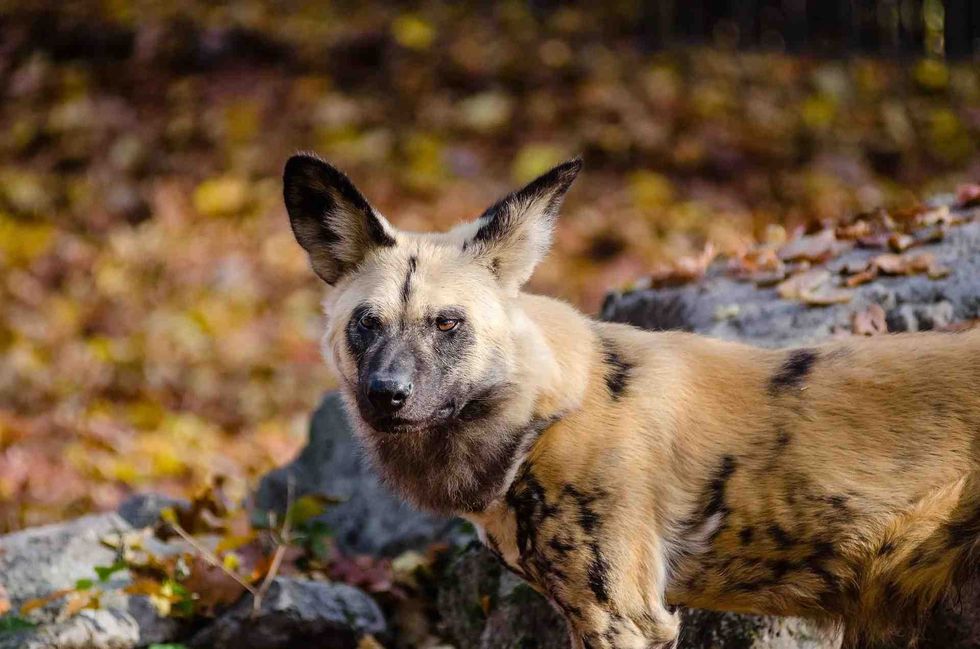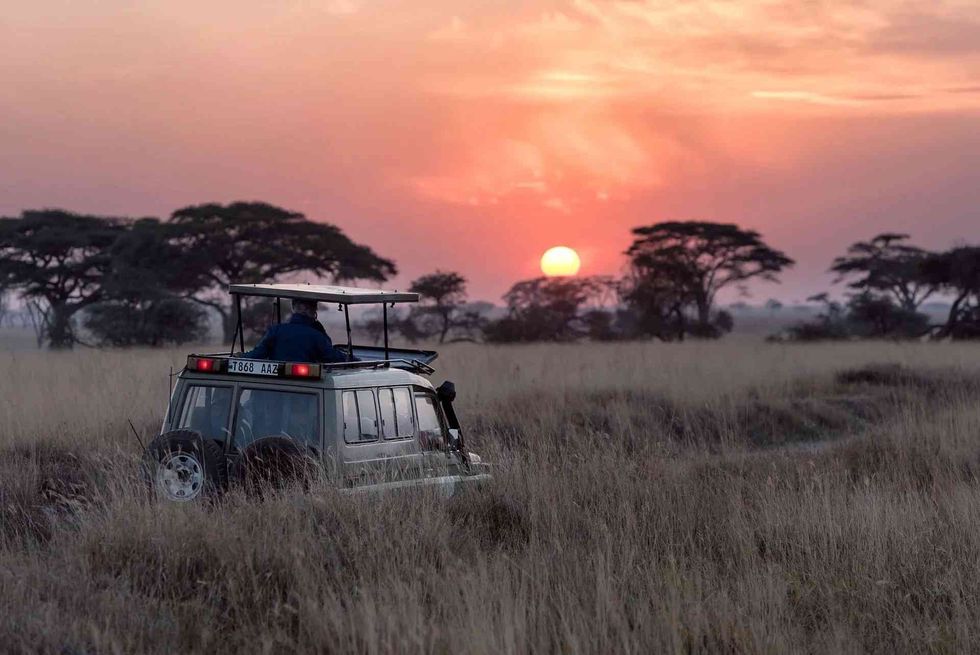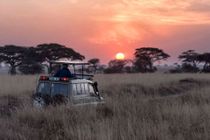17 African Safari Facts You Should Know For Your African Adventure

When you think of wild animals roaming the wild, the first place that comes to your mind would most certainly be Africa.
The cradle of human civilization is also the cradle of the most diverse wildlife in the world as there are numerous animals that are endemic only to the continent. These animals are the only reason why travelers from across the world like to embark on a wildlife safari across the savannas of South Africa, Kenya, and other African countries.
Africa is a wondrous continent most famous for its wildlife. The continent is a tourist attraction for this reason.
Many people plan their vacation for an African adventure as it allows you to get up close and personal with the world’s greatest and most dangerous animals with no apprehension of danger. The safari guide who accompanies you also ensures that you remain safe while exploring and marveling at the beauty of African wildlife.
Although, people do give a thought on whether it is safe to go to Africa on a safari as it is very unusual for us to just playfully sit in safaris with elephants lurking around next to us and where gorillas are just a few meters away.
It obviously seems dangerous but there are various tips that should be kept in mind before planning an adventure ride on an African safari.
These risks can be mitigated by taking the help of expert guides and basic safety rules. The impact of this adventurous trip should be positive and so there are various African safari facts that you should know for your African adventure.
Be it lions, white rhinos, wild dogs, elephants, or the African Buffaloes, you are in for the adventure of a lifetime.
After reading these fun facts on African Safaris, also check animals in Iceland and animals in the Arctic Ocean.
Africa's Big Five
Africa is known for its extensive variety of wild animals, ranging from dangerous predators like the African Lion to the huge African Elephants. Then the famed African buffalo is also one of the marvels of the wildlife here.
If you are interested in watching the most exclusive and incredible African animals on your safari, here are some fun facts related to Africa's big five.
People who decide to go on an African Safari are fortunate enough to see the large species that were once targeted by hunters and were considered to be the most dangerous animals to hunt down.
These dangerous and challenging animals are referred to as the Big Five, the term coined to represent safari royalty of Southern Africa. The Big Five consists of - the African lion, the Cape Buffalo, the rhino that can be either black or white, the African leopard, and the African elephant.
Since hunting them down was a huge challenge, it made them the biggest prizes.
African Elephant- Loxodonta africana is not some huge and giant animal but is the largest and heaviest land animal in the entire world. They are capable of surviving varieties of habitats that include wetlands to arid deserts as they have well-adapted thick skin with a body that can store gallons of water and pounds of vegetation for survival.
Before the ban on the ivory trade, these elephants became endangered, but thankfully since the ban, their living numbers became a bit more stable.
African Lion- Panthera leo is the world’s second-largest cat after the tiger. He is considered to be the undisputed king of the Saharan Savannah.
It might sound weird but these lions are very social animals as compared to other species of the cat family.
They live in pride knowing their designation and often die to protect their territory. There are a few natural predators of lions like buffaloes that can trample on little cubs killing them, but still, their biggest threat is the man that has contributed the largest in declining numbers of these beautiful royal animals.
African Leopard- Panthera Pardus, the most elusive out of the Big Five are beautiful and a pleasure to the eye. They have phenomenal skin camouflages with a series of black spots or rosettes. Leaving claw marks or urinating at places is their way to mark their presence.
They are excellent climbers and runners. They use this skill meticulously to search for their prey. Leopards often stay hidden during daylight as they are naturally shy and exclusively nocturnal.
Cape Buffalo- Syncerus caffer, one of the more dangerous animals in Africa, is likely to be seen in the water-rich reserves and national parks throughout sub-Saharan Africa. There are five species of these buffaloes known out of which the largest is often found in East Africa and South Africa.
These are considered to be dangerous animals is because of their deadly horns, their bad temper, huge and giant bodies. They are highly likely to be seen in Kruger National Park, South Africa, Chobe National Park, Botswana.
White and Black Rhino- The black rhino, with scientific name as Diceros bicornis, and the white rhino, with scientific name as Cerathotherium simum are sadly on the IUCN Red List as they are highly endangered species.
They are on such a level of getting extinct that unfortunately they cannot be secured. All this mishap happened due to the poaching of these beautiful animals for their rhino horn in Asian cultures.
The number of Black rhino left is estimated to be around 5000 whereas that of the white rhino is estimated to be 20,000.
There is no difference between white rhinos and black rhinos despite their names, and the easiest way to differentiate between them is by their lips. According to ancient history, white rhinos have roamed the African plains for about 50 million years. They can, fortunately, be spotted in Hluhluwe-Imfolozi Park, South Africa.
Africa's Little Five
Did you know that the national parks in Africa attract wildlife enthusiasts who are interested in the unique wild animals of the continent? Other than the fabled big five of Africa, the little five of Africa are also equally popular. Here are some extremely interesting facts related to these little animals of Africa.
We have read about the Big Five of Africa above, but for your knowledge, that is not it. Africa has its Little Five too that is a must see while out on an African safari. The Little Five include - leopard tortoise, buffalo weaver, rhinoceros beetle, ant lion, and the elephant shrew.
Elephant Shrew- Strange but some elephants only grow up to a length of 9-12 in (22.5-30 cm) with less weight. They become prey to snakes and huge birds and so are little less spotted on a tour.
Buffalo Weaver- It is a little bird, dark in color with a bright red beak, social whose calls and cackles make for a noisy gathering. Not to go by the name weaver, these birds make messy nests of grasses and twigs.
Rhino Beetle- Beetles got rhino added to their name due to the large horns on male beetles. These are little yet very impressive insects that are considered to be among the strongest creatures in the world in proportion to their body weight.
Leopard tortoise- These tortoises have beautifully marked shells just like the skin of leopards.
Ant Lion- This has a predatory behavior of digging conical traps in the sandy soil to catch its prey, from which it probably derives its name.
African Safari Vehicles
Well, in order to have the maximum fun during your wildlife safari, you need to opt for not only the most comfortable but also the most secure safari vehicles. There have been several instances of animals attacking safari vehicles. So, it assumes greater importance to make an informed choice while selecting a vehicle for your African adventure.
The availability of the Safari vehicle varies according to the country where the national park is located. For example, the choice of vehicles available for a South African Safari might vary from those available for a Kenyan Safari.
African Safari and its type shall always be of utmost importance when on a trip in Africa. The type of safari you will choose to ride will depend upon the style of safari you choose and the African spot that you choose to go to.
The different types of safaris offer different designs with a common purpose, that is to provide the most comfort and enhancement of your game-viewing experience.
The following are the different types of vehicles used for riding according to different types of destinations.
Safari vehicles in South Africa: Vehicles that tend to be used here are Open-sided 4x4 Land Cruisers and Land Rovers with tiered seatings. It is because they are more open unless they are used for road transfers as well as off-road game viewing.
Safari vehicles in East Africa- Closed 4WD safari vehicles with a pop-up roof that raises for better game-viewing and excellent photography. Most of these safari vehicles have in-built refrigerating systems and air conditioning to keep the visitors hydrated and comfortable.
Here closed vehicles are permitted and not open ones for the safety of the visitors since wildlife creatures are likely to climb or jump on the vehicles here.
Some other types of safari vehicles include Safari Minibuses or SUVs for Kenya daytime tours along with a driver guide. Out of the nine seats the minibus provides, only seven are accommodated so that everyone gets a window seat.
Also, mobile safari vehicles for destinations like Tanzania, Uganda, Botswana, Zambia, and Zimbabwe require all-terrain 4x4 vehicles. Then, Overland Trucks have seating up to 24 passengers, and some of these are featured with built-in kitchens with fridges and even freezers.

South Africa Wildlife
While the whole continent of Africa is known for its wildlife, South Africa deserves a special mention here. Located at the southern tip of the continent, South Africa is home to truly exotic and interesting wildlife. This is the reason that South Africa is the top destination for all the adventurers looking for an exhilarating wildlife safari.
The wildlife of South Africa is a blend of thick flora and amazing fauna as its geographical location supports that way. South Africa lies in the subtropical region and therefore has a wide range of habitats, is ecologically rich, and has diverse wildlife.
Around 297 species of mammal have been recorded in South Africa, 858 birds, around 100 species of snakes, and over 20,000 species of vascular plants. This is the reason why South Africa is so famous for its national parks that allow its visitors to have a close look at these species.
For example, The Kruger National Park, in the east, supports a wide range of ungulates that would include Burchell’s zebra, impala, greater kudu, blue wildebeest known for the wildebeest migration, Cape buffalo, giraffe, and hippopotamus.
Also, a wide range of black and white rhinoceroses, African elephant, African wild dogs, cheetah, leopard, lion, and beautifully spotted hyena. Puff Adder, Black Mamba, Nile Crocodile are a part of its rich wildlife.
Since South Africa is so rich in wildlife, it has been a forever tourist attraction that proves to be essential and beneficial for local communities.
For a fun fact, the national animal of South Africa is the springbok, the blue crane is the national bird, and galjoen is the national fish.
Conservation In South Africa
Conservation of wild animals is extremely important in present times as most animals are facing threats to their survival. Forest fires, climate change, or scarcity of water are posing considerable challenges to the exotic animals of the country.
The saddest part of South Africa is that even if it is home to the world’s richest and beautiful wildlife, it is also home to some of the world’s most endangered species like the mountain gorilla, Ethiopian wolf, and Grevy’s zebra.
To conserve the declining graph of its rich wildlife, South Africa has appointed training rangers as safeguards who use sniffer dogs to stop wildlife trafficking. These species become prey to poaching for their skin, horns.
South Africa empowers local communities through conservation-friendly development and works with international agencies to protect Africa’s natural resources. The future of all creatures can still thrive if people and wildlife learn to live together.
There are places like the Moremi game reserve, Hwange national park, Serengeti national park, and Maasai Mara. You will find large herds of black rhinoceros and other African safari animals in this place.
The African safari guide will be along with the tourists to explain more about the black rhinos and other safari animals. Black rhinos are critically endangered right now.
Other safari animals and African animals you may find include black-backed jackal, African buffalo, saltwater crocodile, painted dog, painted wolf, male ostrich and the Masai giraffe is especially known for giraffe's neck.
African wild dogs are used as domestic dogs to keep the place at guard. Central Africa is mainly known for the grand African elephants and the male lion in their natural habitat.
While the government is doing its bit for ensuring the survival of these endangered animals, an active contribution from the global community is also extremely important to realize the goal.
Here at Kidadl, we have carefully created lots of interesting family-friendly facts for everyone to enjoy! If you liked our suggestions for African Safari facts then why not take a look at Central Africa facts, or understory layer animals.
We Want Your Photos!
More for You
Bachelor of Arts and Law specializing in Political Science and Intellectual Property Rights

Anusuya MukherjeeBachelor of Arts and Law specializing in Political Science and Intellectual Property Rights
With a wealth of international experience spanning Europe, Africa, North America, and the Middle East, Anusuya brings a unique perspective to her work as a Content Assistant and Content Updating Coordinator. She holds a law degree from India and has practiced law in India and Kuwait. Anusuya is a fan of rap music and enjoys a good cup of coffee in her free time. Currently, she is working on her novel, "Mr. Ivory Merchant".
Disclaimer
1) Kidadl is independent and to make our service free to you the reader we are supported by advertising. We hope you love our recommendations for products and services! What we suggest is selected independently by the Kidadl team. If you purchase using the Buy Now button we may earn a small commission. This does not influence our choices. Prices are correct and items are available at the time the article was published but we cannot guarantee that on the time of reading. Please note that Kidadl is a participant in the Amazon Services LLC Associates Program, an affiliate advertising program designed to provide a means for sites to earn advertising fees by advertising and linking to Amazon. We also link to other websites, but are not responsible for their content.
2) At Kidadl, we strive to recommend the very best activities and events. We will always aim to give you accurate information at the date of publication - however, information does change, so it’s important you do your own research, double-check and make the decision that is right for your family. We recognise that not all activities and ideas are appropriate for all children and families or in all circumstances. Our recommended activities are based on age but these are a guide. We recommend that these ideas are used as inspiration, that ideas are undertaken with appropriate adult supervision, and that each adult uses their own discretion and knowledge of their children to consider the safety and suitability. Kidadl cannot accept liability for the execution of these ideas, and parental supervision is advised at all times, as safety is paramount. Anyone using the information provided by Kidadl does so at their own risk and we can not accept liability if things go wrong.
3) Because we are an educational resource, we have quotes and facts about a range of historical and modern figures. We do not endorse the actions of or rhetoric of all the people included in these collections, but we think they are important for growing minds to learn about under the guidance of parents or guardians.







